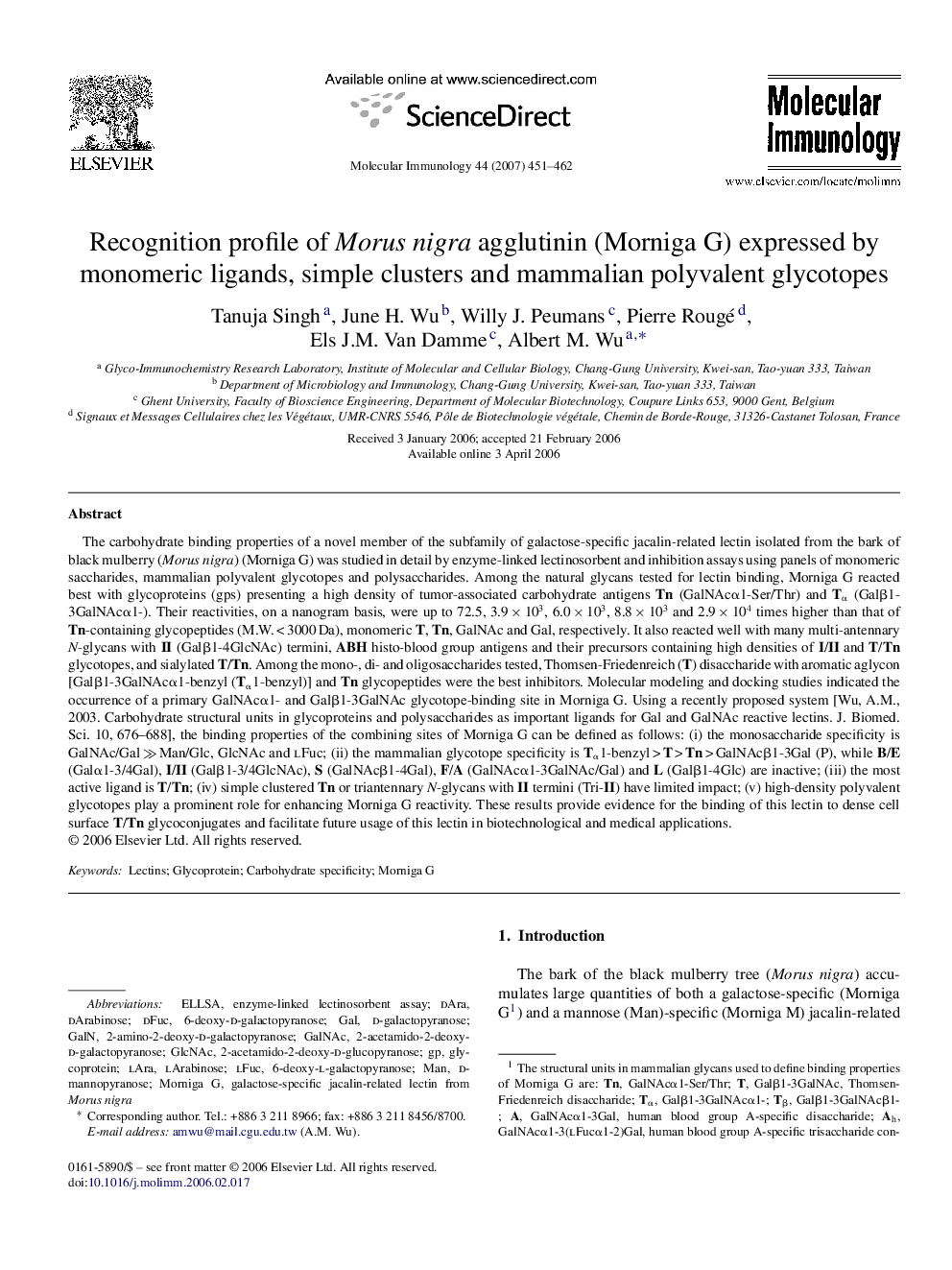| Article ID | Journal | Published Year | Pages | File Type |
|---|---|---|---|---|
| 2833479 | Molecular Immunology | 2007 | 12 Pages |
Abstract
The carbohydrate binding properties of a novel member of the subfamily of galactose-specific jacalin-related lectin isolated from the bark of black mulberry (Morus nigra) (Morniga G) was studied in detail by enzyme-linked lectinosorbent and inhibition assays using panels of monomeric saccharides, mammalian polyvalent glycotopes and polysaccharides. Among the natural glycans tested for lectin binding, Morniga G reacted best with glycoproteins (gps) presenting a high density of tumor-associated carbohydrate antigens Tn (GalNAcα1-Ser/Thr) and Tα (Galβ1-3GalNAcα1-). Their reactivities, on a nanogram basis, were up to 72.5, 3.9 Ã 103, 6.0 Ã 103, 8.8 Ã 103 and 2.9 Ã 104 times higher than that of Tn-containing glycopeptides (M.W. < 3000 Da), monomeric T, Tn, GalNAc and Gal, respectively. It also reacted well with many multi-antennary N-glycans with II (Galβ1-4GlcNAc) termini, ABH histo-blood group antigens and their precursors containing high densities of I/II and T/Tn glycotopes, and sialylated T/Tn. Among the mono-, di- and oligosaccharides tested, Thomsen-Friedenreich (T) disaccharide with aromatic aglycon [Galβ1-3GalNAcα1-benzyl (Tα1-benzyl)] and Tn glycopeptides were the best inhibitors. Molecular modeling and docking studies indicated the occurrence of a primary GalNAcα1- and Galβ1-3GalNAc glycotope-binding site in Morniga G. Using a recently proposed system [Wu, A.M., 2003. Carbohydrate structural units in glycoproteins and polysaccharides as important ligands for Gal and GalNAc reactive lectins. J. Biomed. Sci. 10, 676-688], the binding properties of the combining sites of Morniga G can be defined as follows: (i) the monosaccharide specificity is GalNAc/Gal â«Â Man/Glc, GlcNAc and lFuc; (ii) the mammalian glycotope specificity is Tα1-benzyl > T > Tn > GalNAcβ1-3Gal (P), while B/E (Galα1-3/4Gal), I/II (Galβ1-3/4GlcNAc), S (GalNAcβ1-4Gal), F/A (GalNAcα1-3GalNAc/Gal) and L (Galβ1-4Glc) are inactive; (iii) the most active ligand is T/Tn; (iv) simple clustered Tn or triantennary N-glycans with II termini (Tri-II) have limited impact; (v) high-density polyvalent glycotopes play a prominent role for enhancing Morniga G reactivity. These results provide evidence for the binding of this lectin to dense cell surface T/Tn glycoconjugates and facilitate future usage of this lectin in biotechnological and medical applications.
Keywords
Related Topics
Life Sciences
Biochemistry, Genetics and Molecular Biology
Molecular Biology
Authors
Tanuja Singh, June H. Wu, Willy J. Peumans, Pierre Rougé, Els J.M. Van Damme, Albert M. Wu,
